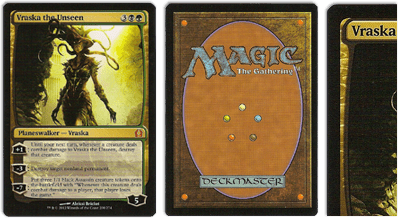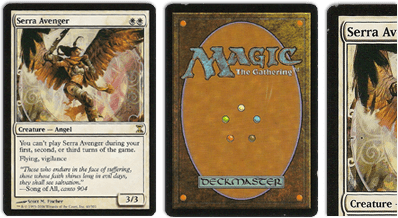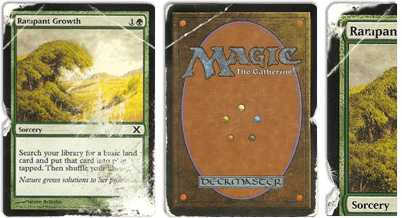-
Wizkids
-
-
-
-
-
-
-
-
In Mysterium, a reworking of the game system present in Tajemnicze Domostwo, one player takes the role of ghost while everyone else represents a medium. To solve the crime, the ghost must first recall (with the aid of the mediums) all of the suspects present on the night of the murder. A number of suspect, location and murder weapon cards are placed on the table, and the ghost randomly assigns one of each of these in secret to a medium.
Each hour (i.e., game turn), the ghost hands one or more vision cards face up to each medium, refilling their hand to seven each time they share vision cards. These vision cards present dreamlike images to the mediums, with each medium first needing to deduce which suspect corresponds to the vision cards received. Once the ghost has handed cards to the final medium, they start a two-minute sandtimer. Once a medium has placed their token on a suspect, they may also place clairvoyancy tokens on the guesses made by other mediums to show whether they agree or disagree with those guesses.
After time runs out, the ghost reveals to each medium whether the guesses were correct or not. Mediums who guessed correctly move on to guess the location of the crime (and then the murder weapon), while those who didn't keep their vision cards and receive new ones next hour corresponding to the same suspect. Once a medium has correctly guessed the suspect, location and weapon, they move their token to the epilogue board and receive one clairvoyancy point for each hour remaining on the clock. They can still use their remaining clairvoyancy tokens to score additional points.
If one or more mediums fail to identify their proper suspect, location and weapon before the end of the seventh hour, then the ghost has failed and dissipates, leaving the mystery unsolved. If, however, they have all succeeded, then the ghost has recovered enough of its memory to identify the culprit.
Mediums then group their suspect, location and weapon cards on the table and place a number by each group. The ghost then selects one group, places the matching culprit number face down on the epilogue board, picks three vision cards — one for the suspect, one for the location, and one for the weapon — then shuffles these cards. Players who have achieved few clairvoyancy points flip over one vision card at random, then secretly vote on which suspect they think is guilty; players with more points then flip over a second vision card and vote; then those with the most points see the final card and vote.
If a majority of the mediums have identified the proper suspect, with ties being broken by the vote of the most clairvoyant medium, then the killer has been identified and the ghost can now rest peacefully. If not, well, perhaps you can try again...
 '
'Near Mint condition cards show minimal or no wear from play or handling and will have an unmarked surface, crisp corners, and otherwise pristine edges outside of minimal handling. Near Mint condition cards appear 'fresh out of the pack,' with edges and surfaces virtually free from all flaws. '
' '
'Lightly Played condition cards can have slight border or corner wear, or possibly minor scratches. No major defects are present, and there are less than 4 total flaws on the card. Lightly Played condition foils may have slight fading or indications of wear on the card face. '
' '
'Moderately Played condition cards have moderate wear, or flaws apparent to the naked eye. Moderately Played condition cards can show moderate border wear, mild corner wear, water damage, scratches , creases or fading, light dirt buildup, or any combination of these defects. '
' '
'Heavily Played condition cards exhibit signs of heavy wear. Heavily Played condition cards may include cards that have significant creasing, folding, severe water damage, heavy whitening, heavy border wear, and /or tearing. '
' '
'Damaged condition cards show obvious tears, bends, or creases that could make the card illegal for tournament play, even when sleeved. Damaged condition cards have massive border wear, possible writing or major inking (ex. white-bordered cards with black-markered front borders), massive corner wear, prevalent scratching, folds, creases or tears. '
'

